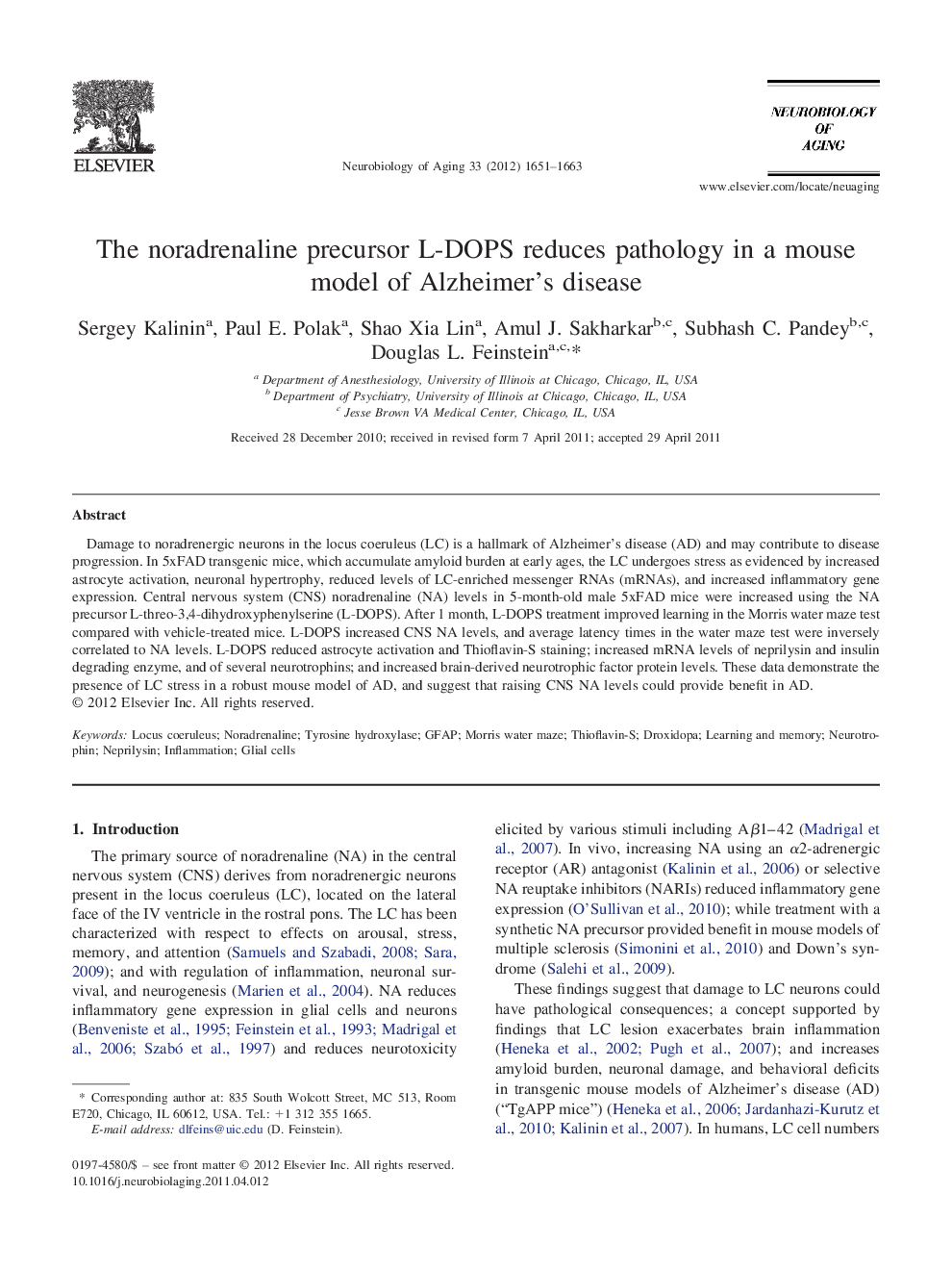| Article ID | Journal | Published Year | Pages | File Type |
|---|---|---|---|---|
| 6808384 | Neurobiology of Aging | 2012 | 13 Pages |
Abstract
Damage to noradrenergic neurons in the locus coeruleus (LC) is a hallmark of Alzheimer's disease (AD) and may contribute to disease progression. In 5xFAD transgenic mice, which accumulate amyloid burden at early ages, the LC undergoes stress as evidenced by increased astrocyte activation, neuronal hypertrophy, reduced levels of LC-enriched messenger RNAs (mRNAs), and increased inflammatory gene expression. Central nervous system (CNS) noradrenaline (NA) levels in 5-month-old male 5xFAD mice were increased using the NA precursor L-threo-3,4-dihydroxyphenylserine (L-DOPS). After 1 month, L-DOPS treatment improved learning in the Morris water maze test compared with vehicle-treated mice. L-DOPS increased CNS NA levels, and average latency times in the water maze test were inversely correlated to NA levels. L-DOPS reduced astrocyte activation and Thioflavin-S staining; increased mRNA levels of neprilysin and insulin degrading enzyme, and of several neurotrophins; and increased brain-derived neurotrophic factor protein levels. These data demonstrate the presence of LC stress in a robust mouse model of AD, and suggest that raising CNS NA levels could provide benefit in AD.
Keywords
Related Topics
Life Sciences
Biochemistry, Genetics and Molecular Biology
Ageing
Authors
Sergey Kalinin, Paul E. Polak, Shao Xia Lin, Amul J. Sakharkar, Subhash C. Pandey, Douglas L. Feinstein,
